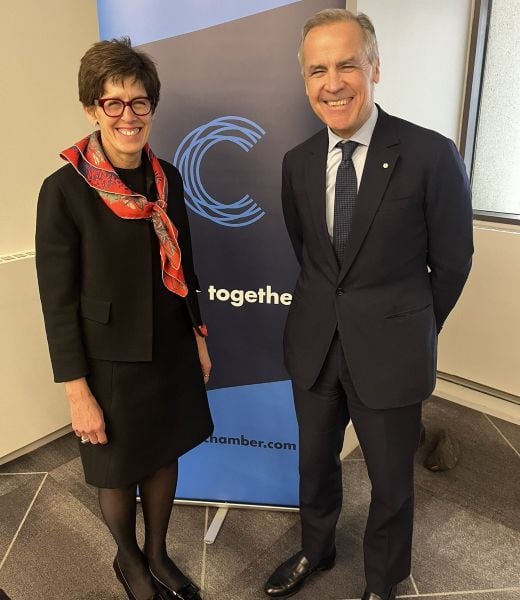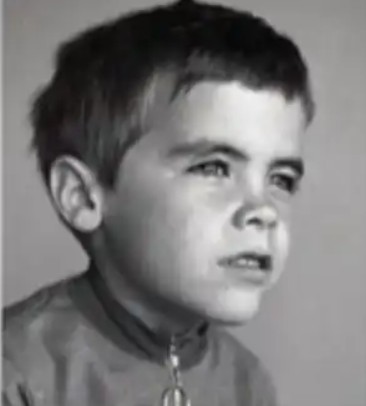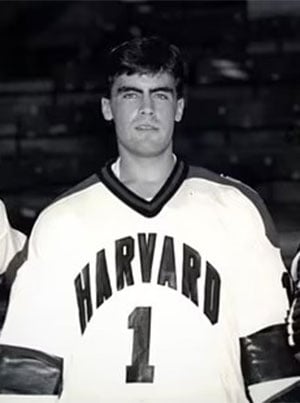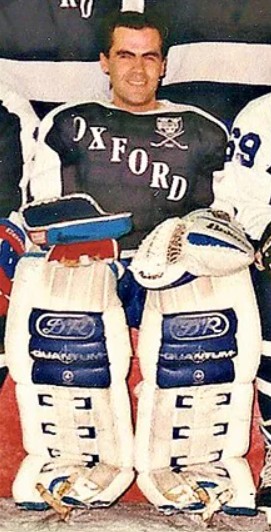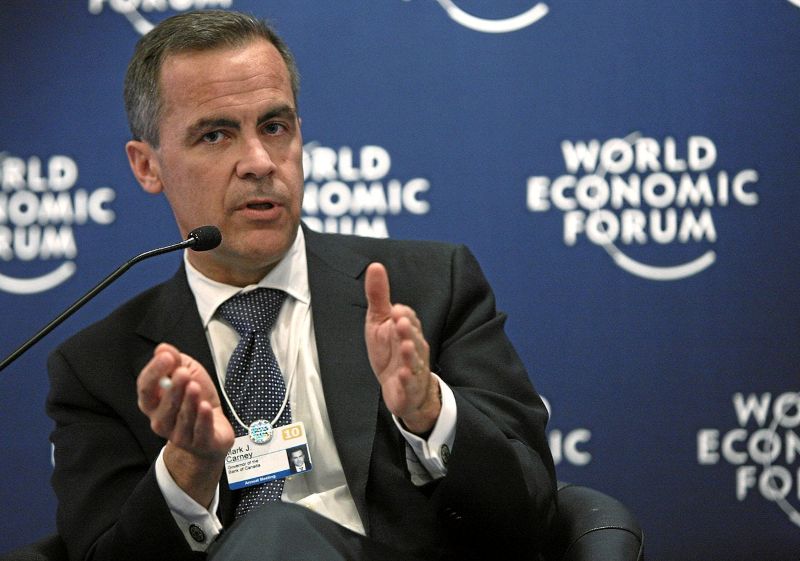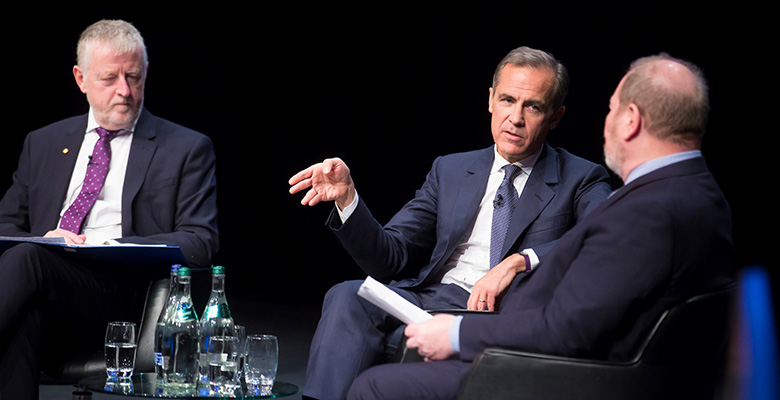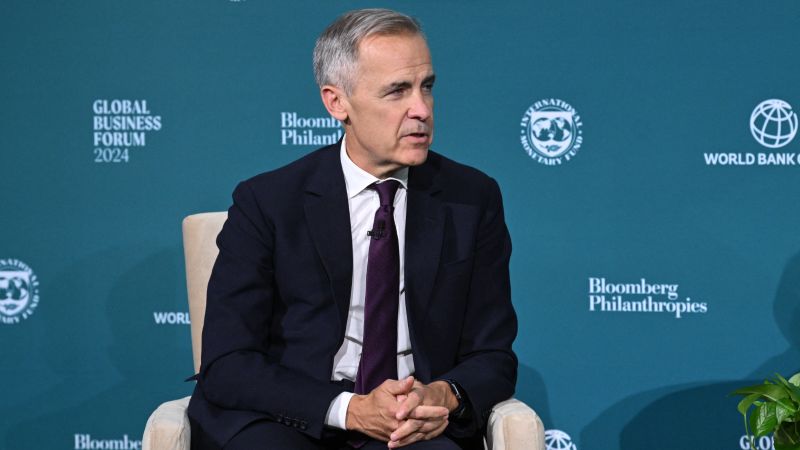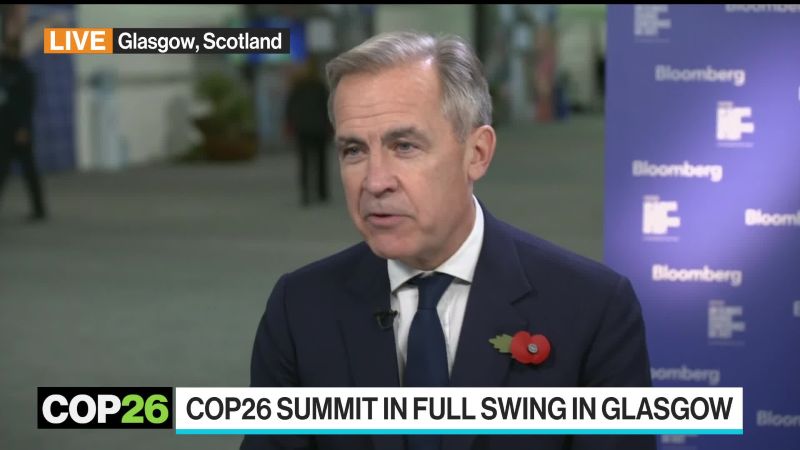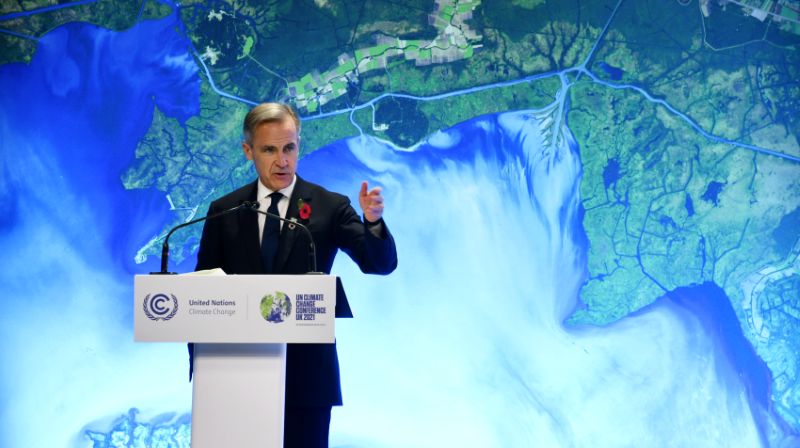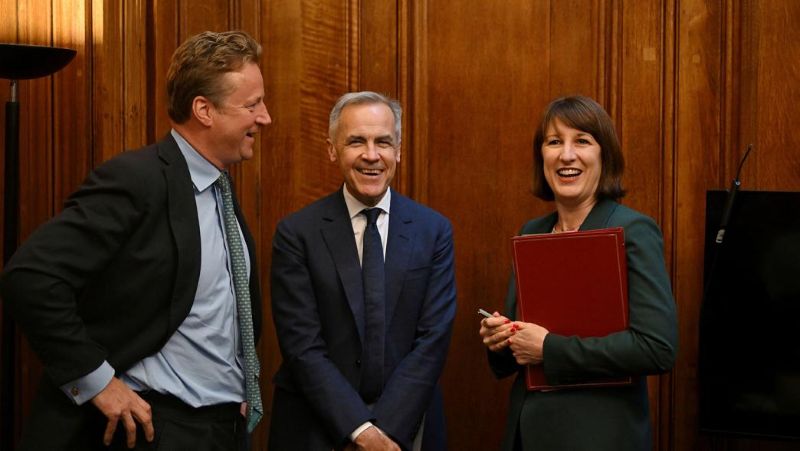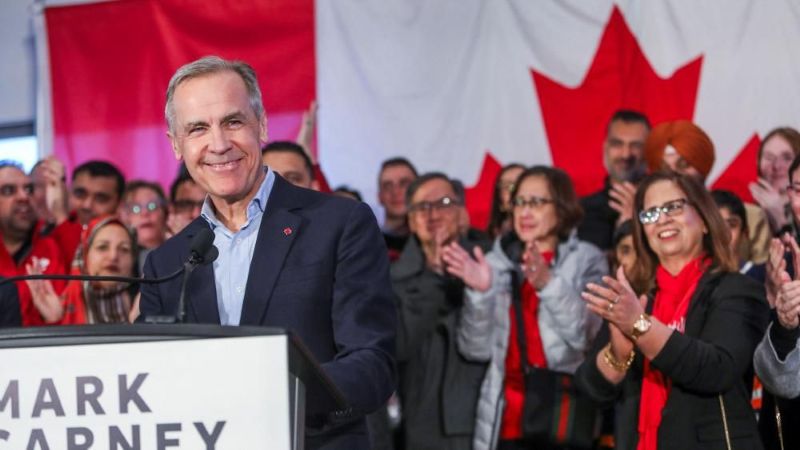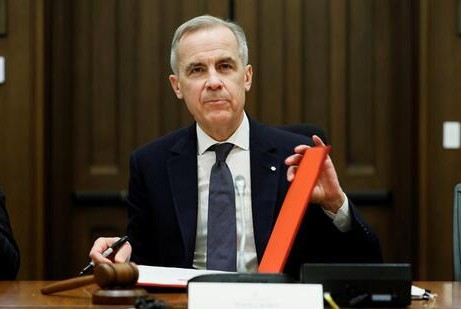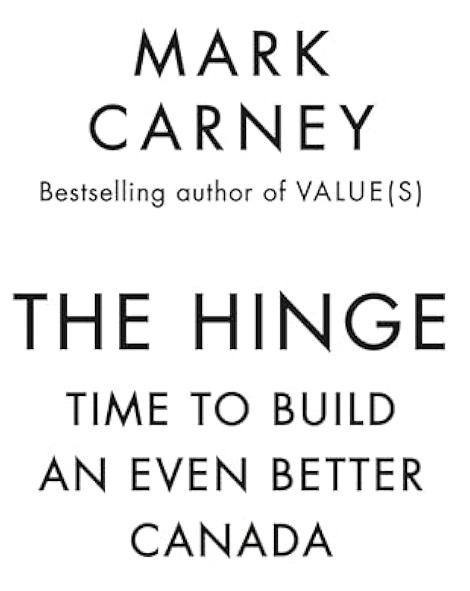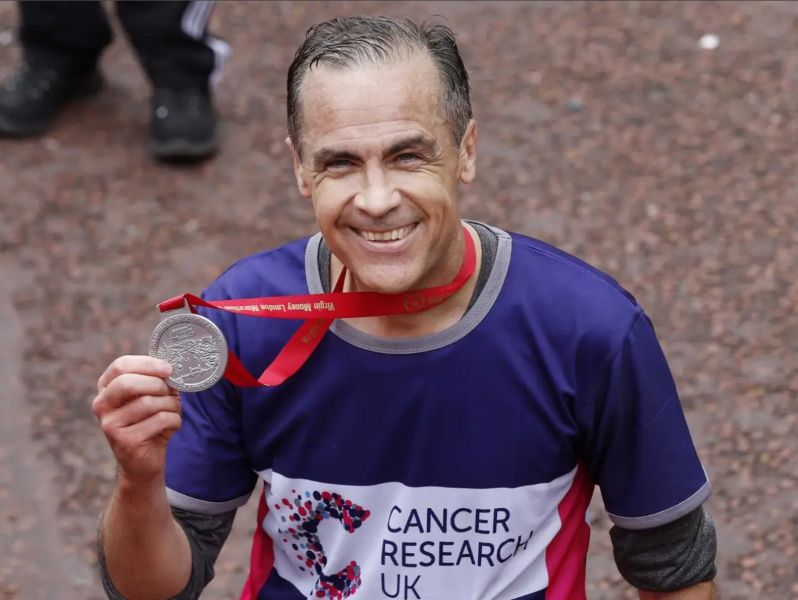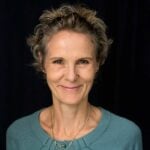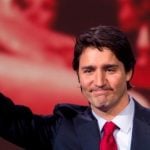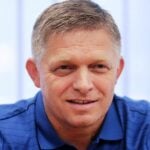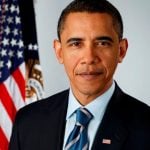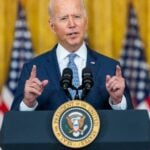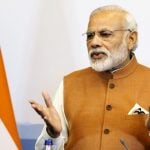Mark Carney Age, Wife, Children, Family, Biography
Quick Info→
Age: 60 Years
Hometown: Ottawa, Ontario, Canada
Wife: Diana Fox Carney
| Bio/Wiki | |
|---|---|
| Full Name | Mark Joseph Carney |
| Names Earned | • The Rockstar Banker • The George Clooney of Central Banking |
| Profession(s) | Politician, Economist, Climate Activist |
| Famous for | • Being the second-youngest governor of the Bank of Canada • Being the only person to head the central banks of UK and Canada • Serving as the 24th Prime Minister of Canada • Serving as the 14th Leader of the Liberal Party of Canada |
| Physical Stats | |
| Height (approx.) | 5' 9" (175 cm) |
| Eye Colour | Light Blue |
| Hair Colour | Salt & Pepper |
| Banking Career | |
| Major Designation(s) | • Appointed as the Deputy Governor of the Bank of Canada (August 2003) • Served as the 8th Governor of the Bank of Canada (1 February 2008 - 1 June 2013) • Served as the 120th Governor of the Bank of England (1 July 2013 - 15 March 2020) |
| Politics | |
| Political Party | Liberal Party of Canada |
| Political Journey | • Became the Leader of the Liberal Party (9 March 2025) • Became the Prime Minister of Canada (14 March 2025) 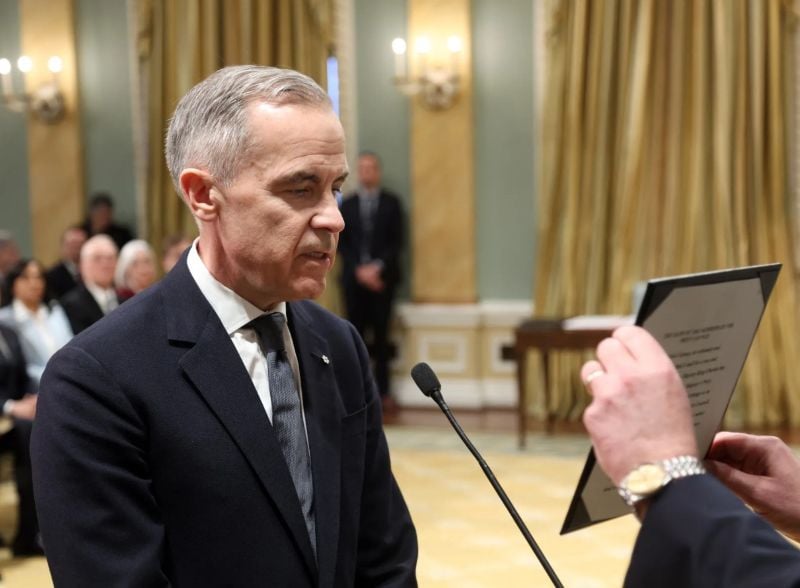 |
| Awards & Honours | • Officer of the Order of Canada (OC) (20 November 2014)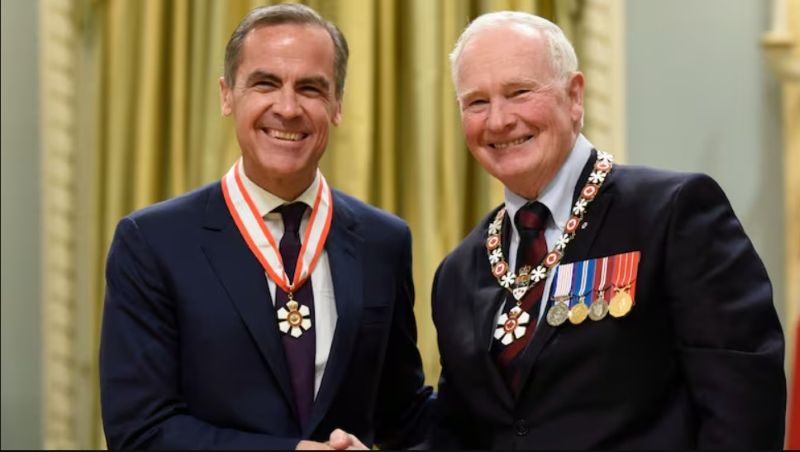 • Queen Elizabeth II Diamond Jubilee Medal (2012) • Honourary degree of Doctor of Laws (LL.D) from the University of Manitoba (5 April 2013) • Honourary degree of Doctor of Laws (LL.D) from the University of Alberta (Spring 2016) 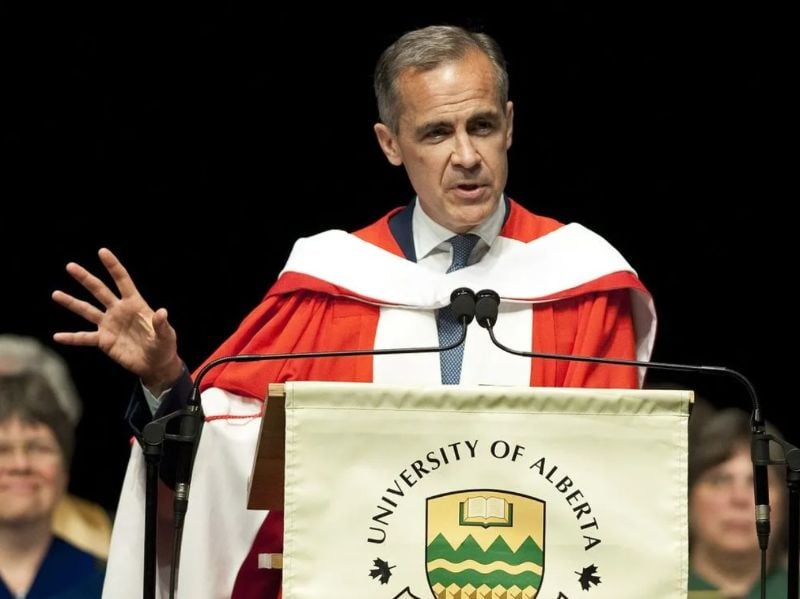 • Honourary degree of Doctor of Laws (LL.D) from the University of Toronto (18 June 2018) 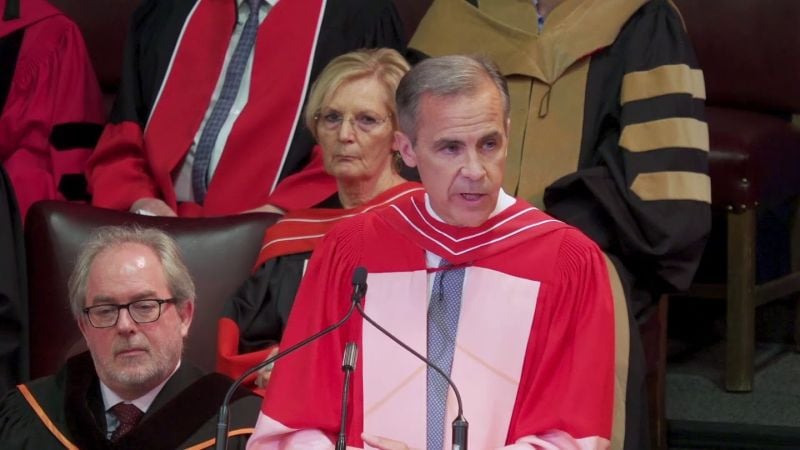 • Honourary degree from the London Business School (16 July 2019)  • National Business Book Award (2021) • Freeman of the City of London (2022) • Honourary Fellow at Nuffield College, University of Oxford |
| Personal Life | |
| Date of Birth | 16 March 1965 (Tuesday) |
| Age (as of 2025) | 60 Years |
| Birthplace | Fort Smith, Northwest Territories, Canada |
| Zodiac sign | Pisces |
| Signature | 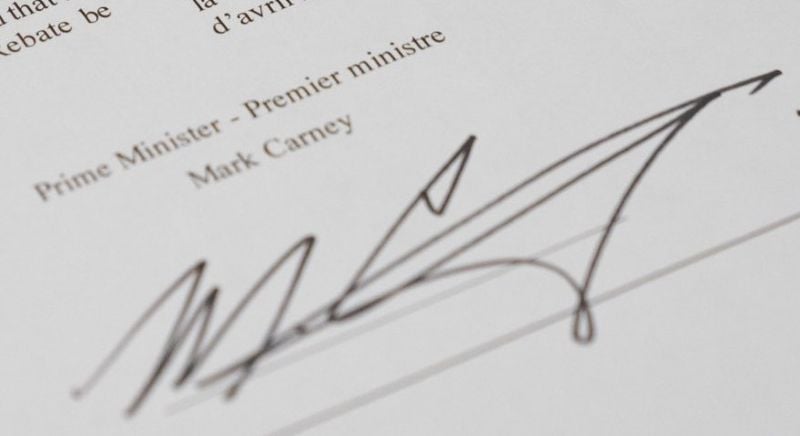 |
| Nationality | Canadian |
| Hometown | Ottawa, Ontario, Canada |
| School | St. Francis Xavier High School, Alberta, Canada |
| College/University | • Harvard University • University of Oxford |
| Educational Qualification(s) | • Bachelor's degree in Economics from Harvard University (1988) • Master's degree in Economics from University of Oxford (1993) • PhD in Economics from University of Oxford (1995) |
| Religion | Christianity (Catholic) |
| Food Habit | Non-vegetarian |
| Social Media | • Instagram |
| Relationships & More | |
| Marital Status | Married |
| Affairs/Girlfriends | Diana Fox Carney (economist, philanthropist, academician) |
| Marriage Date | July 1994 |
| Family | |
| Wife/Spouse | Diana Fox Carney (economist, philanthropist, academician)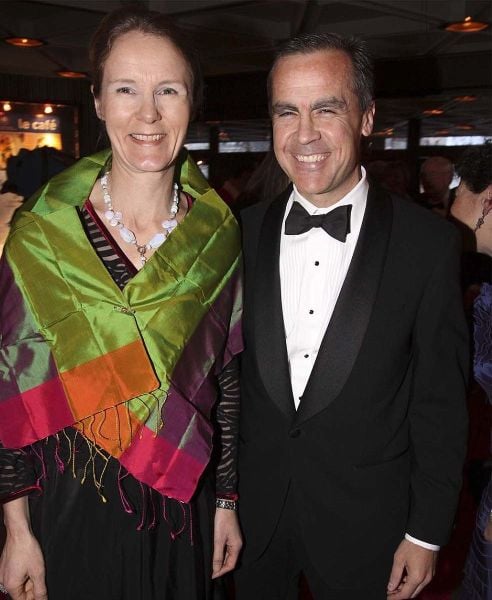 |
| Children | Son- None Daughter(s)- 4 • Sophia Carney • Amelia Carney • Tess Carney • Cleo Carney (studies at Harvard University) 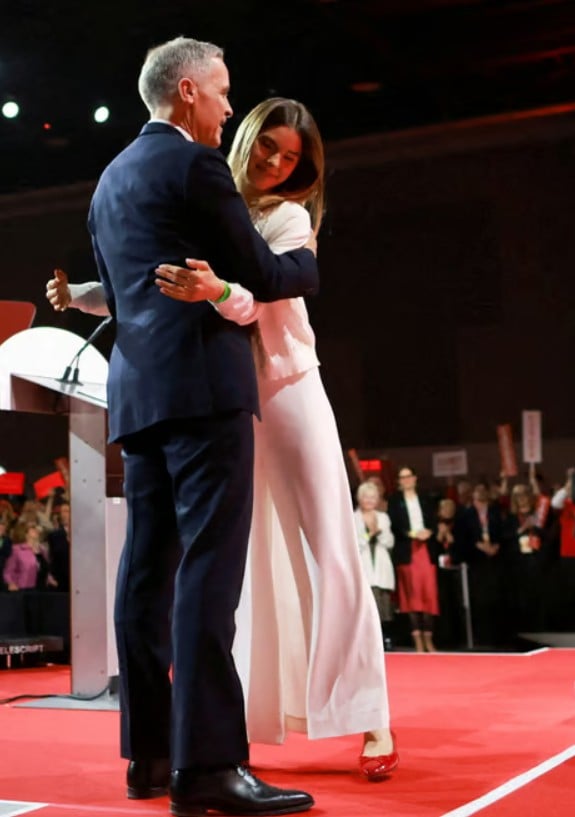 |
| Parents | Father- Robert James Martin Carney (educator)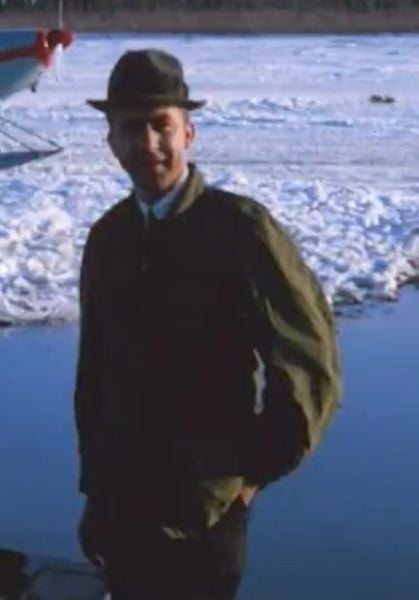 Mother- Verlie Margaret Carney  |
| Siblings | Brother(s)- 2 • Seán Carney (elder; lawyer, COO of Kensington Palace) 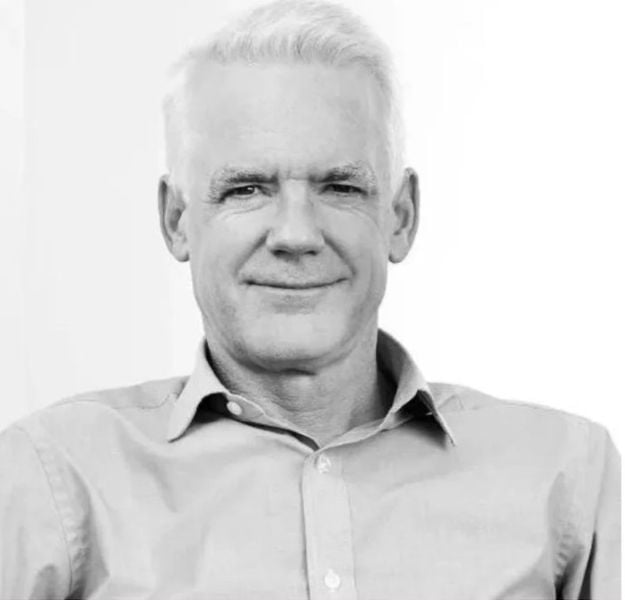 • Brian Carney (younger) 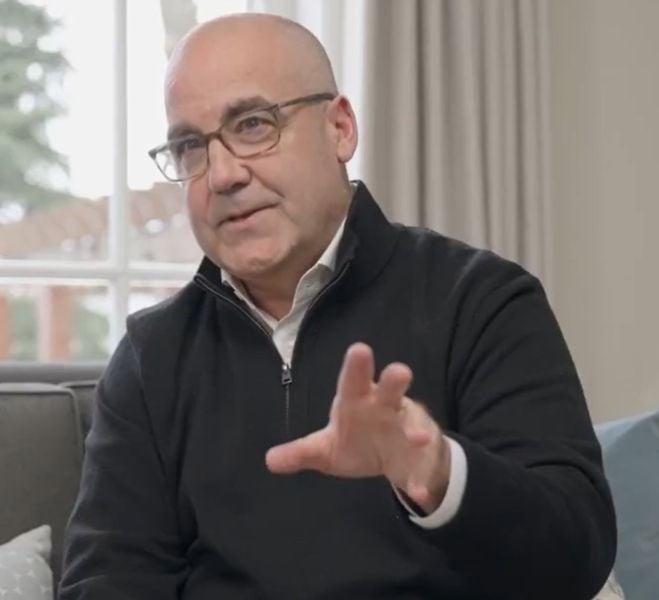 Sister- 1 • Brenda Carney (elder) |
| Other Relatives | Father-in-law- Christopher Fox (farmer) Mother-in-law- Jennifer Atkinson Sister-in-law- Lady Rotherwick Brother-in-law- Robin Cayzer (3rd Baron Rotherwick) 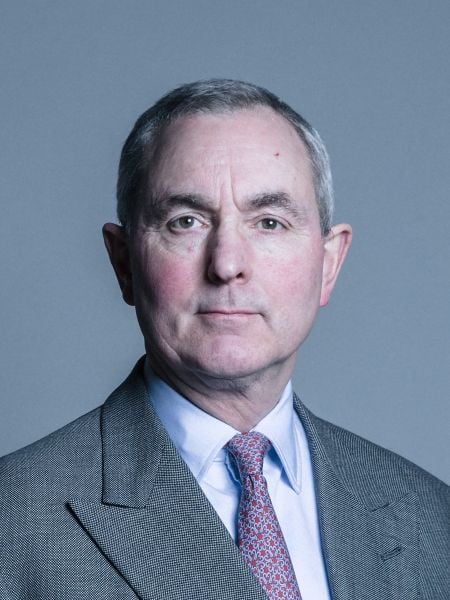 |
| Favourites | |
| Snack | Pizza |
| Ice Hockey Team | Edmonton Oilers |
| TV Shows | British: The Great British Bake Off |
| Animal | Dog |
| Money Factor | |
| Salary (approx.) | Can$ 406,200 (as the Prime Minister of Canada) (as of 2025) |
| Pension (approx.) | £144,000 + other allowances (as the Governor of Bank of England) |
| Net Worth (approx.) | USD 6.97 million (as of 2025) |
Some Lesser Known Facts About Mark Carney
- Mark Carney traces his roots back to Ireland, with three of his four grandparents from there.
- At the age of six, he and his family relocated from Fort Smith, Northwest Territories, to Edmonton, Alberta.
- Until Carney turned ten years old, his mother did not work anywhere. After it, she resumed her teaching career at a Canadian university.
- In 1980, his father contested the federal elections in Canada as a Liberal Party candidate. However, he could not win the elections and stood second in the run-offs.
- Carney was a brilliant student; therefore, he was able to secure a scholarship and partial financial aid to study at Harvard University in the United States of America.
- In school, he used to play hockey on the school’s team and played as a goalkeeper for the Laurier Heights.
- In school, he was chosen to take part in Reach for the Top as part of both of English and French teams. The show is a rapid-fire show that asks GK questions to its contestants.
- While studying at the university, he got interested in university-level ice hockey, and as a result of this, he joined the university’s ice hockey team as a goalkeeper. He represented the university at various national-level inter-university tournaments.
- At the university, he became friends with Peter Chiarelli, who went on to become a well-known National Hockey League manager, and Mark Benning, a retired and famous NHL player.
- In 1988, he earned a magna cum laude in his graduation.
- To receive his MPhil in Economics from the Oxford University, he wrote a thesis titled “Competitive advantage and the advantage of competition: a theoretical analysis of national champions, learning-by-doing and spillovers.”
- To receive his PhD in Economics from the Oxford University in 1995, he wrote a thesis titled “The dynamic advantage of competition.” His thesis was done under the guidance of a popular American economist named Margaret Ann “Meg” Meyer. This thesis was later selected to be kept in the library as a sample thesis for its doctorate students.
- He later joined the Oxford University Ice Hockey Club and went on to become its co-captain. One of his team members was David Lametti, who went on to become a famous lawyer and politician in Canada. Carney not only led the Oxford Blues (the name of the university’s ice hockey team) but also played a vital role in managing its roster.
- It was during his time at Oxford that he met Diana Fox Carney; they soon began dating each other. After dating one another for some time, the couple got married in 1994.
- In 1988, he joined Goldman Sachs, where he worked for fifteen years. There, he worked as the Co-head of Sovereign Risk, Executive Director of Emerging Debt Capital Markets, and Managing Director of the Investment Banking. He worked in the organisation’s Boston, London, New York City, Tokyo, and Toronto branches.
- He also worked as a representative of Goldman Sachs in Russia after the 1998 Russian economic crisis.
- He then relocated to South Africa, where he worked with the government in an advisory capacity regarding its entrance into the international trade and bond market after the abolishment of the apartheid.
- After leaving Goldman Sachs, he relocated to Ottawa, Canada, where he joined the Bank of Canada as a deputy governor, a post which he held for a year.
- On 15 November 2004, he started working as a Senior Associate Deputy Minister of Finance in Canada’s Department of Finance. He worked there till 2007.
- During the same time frame, Mark Carney was appointed as the G7 deputy in the Department of Finance Canada.
- At the Finance Department, he was appointed as an overseer of the committee that worked on a controversial bill, which aimed at levying taxes on income trusts at source. He also oversaw the sale of 19 per cent of stakes held by the Canadian government in Petro-Canada to overcome financial crunch.
- On 1 February 2007, he was appointed as the governor of the Bank of Canada. Before taking over the office of the governor, Carney briefly served as the advisor to the outgoing governor to get well-versed with the working protocols.
- He superseded Paul Jenkins, who was considered the most eligible person to take over the post as he was the senior deputy governor, to take over the post. Carney became the youngest person to become the head of a central bank among the G7 and G20 nations.
- During the 2008 economic crisis in Canada, Mark is said to have made policies which protected the economy from recession. It is also said to have protected jobs and livelihood of the Canadians.
- In March 2008, he reduced the interest rates at which the Canadians were given loans. Soon after, he lowered the overnight rate (the interest rate banks use to lend money to each other) by 0.5 per cent.
- By mid-2008, Mark Carney was one of the few economists who predicted that the recession in the United States of America would impact the global economy.
- In 2009, after having lowered the interest rate several times, Carney refused to reduce it further. However, Carney made a policy called “conditional commitment,” according to which the bank agreed not to increase the interest rate for a year.
- This assisted in boosting the borrowing among Canadians, as a result of which, by mid-2009, the Canadian economy began to improve. According to international sources, the Canadian government performed much better than its G7 and G20 counterparts and within a few months of implementing the policies, the GDP and employment level reached the pre-2008 era.
- Reducing the interest rates had repercussions as well. Due to the low borrowing rates, Canadians started borrowing money from banks with lower rates to buy more properties, especially houses. This increased the housing prices. At the same time, many households took on more debt because borrowing was so affordable.
- In March of the same year, Mark Carney was named in the Financial Times’s “Fifty who will frame the way forward” list.
- From 2010 to January 2025, he worked in the World Economic Forum (WEF) as a member of its board.
- In 2010, he was featured in Time magazine’s 2010 Time 100.
- In July of the same year, Mark Carney was appointed as the chairman of the Bank for International Settlements’ Committee on the Global Financial System. His tenure ended in 2012.
- Thereafter, he served as a member in the global body of leading financiers and academics named Group of Thirty (G30). During this time, he served on the World Economic Forum’s foundation board.
- In 2011, he joined the Financial Stability Board (FSB), an international body based in Basel, Switzerland, as a chairperson. He remained in the post for seven years. There, he worked on coordinating the functioning of regulatory authorities around the world.
- Soon after he joined the board, the FSB issued a list in which it named the Bank of Canada as one of the 29 banks whose downfall could lead to a global financial catastrophe. He worked on a part-time basis at FSB.
- In the same year, he was featured in the Editor’s Choice for Most Trusted Canadian list of Reader’s Digest.
- He was among the few renowned individuals who supported the Occupy Wall Street movement in the US. He often referred to the movement as “constructive,” as it focused on workplace inequality and increasing CEO-worker pay gaps.
- The Euromoney magazine named him Central Bank Governor of the Year 2012.
- He was invited to attend the annual closure meetings of the Bilderberg Group in 2011, 2012, and 2019. There, he used to open the meetings by presenting a report on the group’s finances and monetary status.
- He left the governorship of the Bank of Canada in 2013.
- After completing his tenure at the Bank of Canada, he relocated to London in the United Kingdom, where he joined the Bank of England as its governor. He was the first non-British citizen to be appointed to the post ever since the bank became functional in 1694.
- Under his governorship, Mark convinced the Government of Britain to allow the bank to set bank capital requirements to allow it to generate more revenue.
- Before he took over the post, he entered into a disagreement with the then-Bank of England’s Executive Director of Financial Stability, Andy Haldane, over leverage ratios and bank break-ups. While giving an interview, Carney is said to have said that Andy did not possess adequate knowledge and information on how bank regulations work and their implications.
- While serving in the Bank of England, he used to receive an annual salary of £624,000 (USD 844,000), £100,000 (USD 135,000) more than the previous governor. This move of the British government was criticised by the British citizens as they thought that it was unfair to pay a non-Britisher more than a Britisher received previously.
- He also brought changes into the Standard Operating Procedures (SOPs) of the bank and began media publicizing of the policies of the bank. According to sources, he appeared more times in the media than his predecessors.
- In 2014, he said that despite Scotland being a sovereign entity, it would have to “surrender” to the United Kingdom if it did not come with its currency and continued using the British Pound. He expressed his desire in favour of conducting a financial referendum in Scotland.
- In May of the same year, Carney expressed his desire to advise the government to amend the Help to Buy mortgage scheme, which he thought was contributing to the worsening housing inflation. He also advised the British government to build more affordable houses for its growing population and often compared it with the Canadian model, despite Canada having a smaller population.
- As per a report compiled by him in 2014, while 1,40,000 homes were built in the UK, 1,85,000 were built in Canada in 2013.
- He, soon after taking over the governorship, played a vital role in the formalizing of the functioning of the Financial Services Authority (FSA). However, it was later shut down.
- Carney then proposed the implementation of the “forward guidance policy,” according to which the banks would not increase the interest rate if the unemployment rate was over 7 per cent. This was intended to encourage business lending to improve entrepreneurship.
- He reportedly once had a heated argument with the British government’s finance officials over implementing policies to check and control rising property prices and large-value mortgages to avoid debt overhang, destabilizing the economy.
- In 2015, Carney instructed the bank officials to publish the details of the meetings which took place over the making of financial policies to the public. He, however, reduced the total number of meetings from 12 to 8.
- In the same year, the British tabloid The Tablet named Mark Carney as the most influential Catholic in Britain.
- In June 2016, before the Brexit referendum in Britain, Carney warned the British government that an abrupt removal from the European Union (EU) could not only weaken the British pound but could also cause the economy to decline, leading to recession and loss of jobs as European companies could leave Britain in retaliation.
- In an interview, Carney revealed that a few months after Britain left the European Union (EU) were the toughest days of his career as a governor and an economist. To help Britain maintain its inflation rate, he reduced the interest rate to 0.5 per cent from 0.25 per cent. He also restarted several quantitative easing programmes to support the economy and avoid its crashing.
- He was invited to deliver a speech at the Roscoe Lecture at Liverpool John Moores University. There, he spoke on the staggering wealth inequality topic and stressed the risks it posed on society.
- Thereafter, he joined a California-based money management and life insurance company named Pacific Investment Management Company (PIMCO) as an advisory board member. He worked in the company till January 2025.
- In 2019, he was invited to attend the Jackson Hole economic symposium, where he met with Jerome Powell, chairman of the US Federal Reserve, and worked jointly on uplifting the British and American joint economy partnership.
- He remained as the Governor of the Bank of England post till 2020.
- After retiring as the governor, he relocated to Canada, where the Trudeau administration appointed him as the Prime Minister’s unofficial advisor on financial issues.
- Over time, he reportedly earned Prime Minister Justin Trudeau’s trust, who looked up to him for making non-finance-related decisions like those related to COVID-19. He played a crucial role in preventing Canada from entering a recession.
- Owing to his policy making and governance skills, many Liberal Party leaders, as well as Canadian citizens, wanted him to become the Minister of Finance and later, the Prime Minister of Canada, once Trudeau left the post.
- From 2020 till January 2025, he worked as a board member at the Bloomberg Philanthropies.
- Owing to his expertise in the field of economics and finance management, the Government of Britain appointed him as its financial advisor in 2020. In this role, he worked in the Prime Minister’s Office (PMO) and served as his advisor on how to mobilise an ambitious action from across the financial system ahead of the COP26 in November. He served in the government till January 2025.
- The United Nations (UN) appointed him as its Special Envoy on Climate Action and Finance in 2020. There, he worked on devising global policies aimed at reducing carbon emissions to reduce the global temperature by 1.5 degrees. He also played an instrumental role in formulating the Paris Climate Agreement to support the transition to a net-zero carbon economy. In January 2025, he left the post.
- In August 2020, he was appointed as the Chair and Head of Transition Investing at Brookfield Asset Management in Ottawa, Ontario, Canada. There, he worked on the organisation’s environmental, social and governance (ESG) and also worked on devising impact fund investment strategy.
- In October of the same year, he claimed that the company had a $600 billion net-zero emissions portfolio, a claim that he retracted later.
- Earlier, he had claimed that the company had a large renewable energy portfolio, which was an accounting trick because avoided emissions do not counteract the emissions from investments in coal and other fossil fuels responsible for Brookfield’s carbon footprint of about 5,200 metric tons of carbon dioxide.
- He was one of the important individuals who led the creation of a task force on Scaling Voluntary Carbon Markets, which oversaw the implementation of policies aimed at increasing the trading of voluntary carbon offsets.
- While working in the task force, he worked with appointment holders from various well-known international organisations such as Bank of America, BlackRock, Bloomberg’s New Energy Finance, BNP Paribas, BP, Boeing, Goldman Sachs, Tata Steel, Total, IHS Markit, and LSE.
- Later, an article was published in the Financial Times, in which it was claimed that the British government would appoint Carney as head of a committee which would oversee the setting up of a new pilot market for voluntary carbon offsets.
- Mark Carney has often raised his voice against the American dollar’s domination in the world economy. He claimed that it posed a risk to the global economy as it often destabilized growing economies because of the currency being used for trade purposes. He also urged central banks across the globe to collaborate in replacing the US dollar as reserve currency.
- From February 2021 to January 2025, he worked at Stripe, an asset management company, as a member of its board.
- Later, in 2021, Carney was invited to give a speech at a convention organised by the Canadian Liberal Party. There, he offered to support the party but did not seek to run for the leadership post.
- In the same year, he once again rejected the Liberal Party’s offer to contest the Federal elections, claiming his COP26 commitments.
- He established the Glasgow Financial Alliance for Net Zero in 2021 to work with the world’s leading baking and financial institutions in climate conservation. However, due to America’s influence and Trump, leading partners of the alliance withdrew.
- As an economist, Mark Carney has published numerous articles and journals. Some of his well-known work includes How the Economy Must Yield to Human Values (2020), Mainstreaming the Transition to a Net-Zero Economy (2020), The Grand Unifying Theory (and practice) of Macroprudential Policy for the Bank of England (2020), and Pull, Push, Pipes: Sustainable Capital Flows for a New World Order The Growing Challenges for Monetary Policy in the Current International Monetary and Financial System (2020).
- In 2022, he was appointed as an advisor to Watershed, a branch of Stripe created for facilitating the establishment of new companies for climate conversation.
- In the same year, he increased his political involvement after he openly pledged his support to Catherine McKenney as the Mayor of Ottawa in the 2022 mayoral election.
- Mark Carney also increased his involvement in the politics in the United Kingdom (UK) after he pledged to support Rachel Reeves, Shadow Chancellor of the Labour Party, to be the next chancellor of the exchequer of the British treasury.
- Mike Carney was appointed by Michael Rubens Bloomberg, co-founder of the Bloomberg L.P., as chair of the new board of directors in August 2023. Carney had reportedly been on the list for the new chair position well before the reshuffling occurred.
- His involvement in tackling the recession in 2008 as the governor was disputed by the former Prime Minister of Canada, Stephen Harper, in 2025, who claimed that Carney did not work actively and directly in devising policies for the economy. He also said that on numerous occasions, he tried to “undermine” the then-finance minister’s authority and often challenged his orders.
- He has often spoken in favour of expanding urbanisation to resolve the housing crisis across the world. In his opinion, house builders must reduce the parking slots and should lay more emphasis on making high-rise buildings to accommodate more people at affordable rates.
- In September 2024, the in-power Liberal Party appointed him as its special adviser and chair of the task force on economic growth.
- In the same year, he was chosen by the Wimbledon authorities to participate in its Royal Box roll call process.
- Thereafter, Brookfield Asset Management requested the Government of Canada to allocate them $10 billion in funding to create a portfolio worth $50 billion of Canadian assets.
- Carney was initially criticised for not following the SOP as the advisor to the Prime Minister in the allocation of funds. However, it was later revealed that when the funding was released by the government, Carney worked for the Liberal Party and not the Prime Minister.
- Mark Carney took over the task force, which saw the British National Wealth Fund’s establishment in 2024.
- In September of the same year, Prime Minister Justin Trudeau appointed him to head the leader’s Task Force on Economic Growth of the Liberal Party. With this, his stature in the party increased manifold.
- Mark Carney does not like President Donald Trump. His dislike towards him stems from Trump’s statements regarding making Canada the 51st state of the United States of America and imposing heavy tariffs on Canada. In several interviews, Carney has referred to Trump as Lord Voldemort, the antagonist in the Harry Potter franchise. He said,
When you think about what is at stake in these ridiculous, insulting comments of the president, of what we could be, I view this as the sort of Voldemort of comments. Like I will not even repeat it, but you know what I am talking about.”
- In 2025, Carney revealed in an interview that he was offered the position of Minister of Finance in 2012 by the Conservative Party-led government while he was serving as the Governor of the Bank of Canada. However, he declined the offer, stating that he believed it would be “unethical” to transition directly into a career in electoral politics after his tenure as governor. He said,
I have been offered positions in the past. For example, Prime Minister Harper asked me if I would be his finance minister in 2012. It was not appropriate for me to proceed with the offer because I did not feel it would be right to go directly from being governor into elective politics.”
He also claimed that he was approached by the Liberal Party to run for their Leader position, which he declined, citing the same reason.
- On 16 January 2025, Mark Carney was officially chosen to run for the Liberal Party’s leadership elections. Thereafter, he announced his stepping down from all government and non-government posts, such as executive, board, and advisory positions.
- On 9 February 2025, a report was published in which it was claimed that he had raised over 1.9 million Canadian Dollars in donations from over 11,000 people and received endorsements from 66 Liberal caucus members.
- Later, in the elections, Carney received 85.9 per cent of the vote, winning all 343 electoral districts, breaking Justin Trudeau’s 2013 record.
- With his appointment as the Prime Minister of Canada, he became the second PhD holder to hold the office in Canada’s history. He is the first premiere of Canada to have been appointed without ever holding any elected political office.
- Soon after taking over the post, Mark Carney passed a decree in the parliament, which instructed the government to devise policies to end Carbon Pricing in Canada by 1 April 2025. Wherever tax removal was not possible, he asked the government to provide a rebate.
- Thereafter, he revealed that in the 2025 Federal elections, he would be running for the post of Prime Minister from the Nepean electoral district.
- He then instructed the Minister of Finance to increase the defence spending of Canada up to 2 per cent by the end of 2030. This was done as Canada could not meet the defence spending standards of the NATO, which requires at least 2 per cent of the GDP to be spent on the military.
- Carney has penned several books on money and economics. Some of his most well-known books are Value(s) Building a Better World for All (2021) and The Hinge: Time to Build an Even Better Canada (2025).
- Carney is multilingual and is fluent in speaking and writing English and French.
- After becoming the Prime Minister of Canada, Mark Carney revealed in an interview that he had begun the formal process of renouncing his Irish citizenship, which he acquired at the time of birth, and British citizenship, which he acquired in 2018. This was done by him to express his full support for the development of Canada.
- He once revealed that he and his wife would often enter into arguments over their favourite football clubs as he supports Everton FC, and his wife supports Arsenal FC.
- He has also penned the Edmonton Journal.
- Mark is a fitness enthusiast and often participates in marathons. In 2015, he took part in the London Marathon and managed to finish it in 3 hours, 31 minutes, and 22 seconds. Similarly, he once took part in the Ottawa Marathon, which he completed in 3 hours and 48 minutes.
- In an interview, he revealed that his morning routine includes drinking water, meditating, and writing a journal on his day-to-day activities.
- He is the godfather of the son of Chrystia Freeland, who is the former Canadian deputy prime minister and finance minister.


